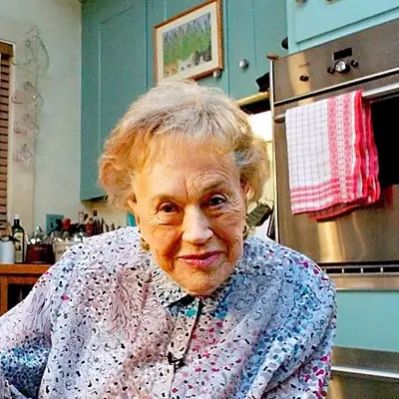What Was Max von Sydow’s Net Worth?
At the time of his death on March 8, 2020, Swedish-French actor Max von Sydow had a net worth of approximately $16 million. This figure represented the culmination of a distinguished career spanning seven decades, encompassing work in film, television, and theatre. His financial stability stemmed from a combination of salary earnings from his roles, royalties, and potentially some strategic investments made over his extensive career.
Early Career and Breakthrough Roles: Establishing a Foundation for His Net Worth
Born Carl Adolf von Sydow on April 10, 1929, in Lund, Sweden, Max von Sydow’s early life did not immediately point toward a path of substantial wealth. His father, Carl Wilhelm von Sydow, was an ethnologist and professor, and his mother, Baroness Maria Margareta Rappe, was a schoolteacher. These were respectable professions, but not typically associated with immense riches. His initial forays into acting, driven by a passion ignited by seeing “A Midsummer Night’s Dream,” led him to create an amateur theatre group, laying the groundwork for his future profession but not directly contributing to his net worth at that stage.
Von Sydow’s professional acting career began after serving two years in the Swedish military and studying at the Royal Dramatic Theatre in Stockholm. His stage debut in Goethe’s “Egmont” marked the commencement of his earning potential, though his initial income would have been modest compared to the heights he later achieved. His early film roles, such as his supporting part in Alf Sjöberg’s “Only a Mother” (1949), while important for gaining experience, would have contributed relatively little to his accumulating net worth.
A pivotal moment arrived in 1957 with his starring role in Ingmar Bergman’s “The Seventh Seal.” While the precise salary he earned for this groundbreaking film is not publicly available, its immense success undoubtedly elevated his profile and, consequently, his earning potential. “The Seventh Seal” became a cornerstone of international arthouse cinema, propelling both Bergman and von Sydow to global fame. His subsequent collaborations with Bergman, totaling 11 films, including “Wild Strawberries,” “Brink of Life,” and “The Magician,” solidified his reputation and provided a steady stream of income, contributing significantly to his rising net worth throughout the late 1950s and 1960s.
International Success and Diversification of Income Streams
In 1965, Max von Sydow ventured into international cinema with his portrayal of Jesus Christ in George Stevens’ “The Greatest Story Ever Told.” While this role may not have commanded an exorbitant salary, it broadened his exposure to a global audience and opened doors to further opportunities. His subsequent appearances in “The Reward” and “Hawaii,” the latter earning him a Golden Globe nomination, suggest an increasing market value and higher compensation for his acting services. Details on his specific contract terms for these films are not available, but it’s reasonable to assume they included standard actor’s fees commensurate with his growing stature, contributing positively to his overall net worth.
The 1970s brought a mix of artistic and commercial endeavors. One of his most commercially successful films during this period was “The Exorcist” (1973), where he played Father Lankester Merrin. The film’s massive box office success likely translated into a substantial bonus or profit-sharing agreement for von Sydow, in addition to his base salary, significantly boosting his income for that year and contributing to his growing net worth. Although specific figures are not publicly accessible, the scale of “The Exorcist’s” success implies a considerable financial benefit for its key actors.
The 1980s saw von Sydow take on a variety of roles, including memorable villainous turns in “Flash Gordon” and “Never Say Never Again.” These roles, while perhaps not as artistically prestigious as his earlier work with Bergman, provided substantial income and further diversified his earning streams. His appearance in “Conan the Barbarian,” “Dune,” and Woody Allen’s “Hannah and Her Sisters” demonstrates his versatility and continued demand, solidifying his financial stability and contributing to his increasing net worth.
Toward the end of the 1980s, von Sydow received his first Academy Award nomination for his leading role in “Pelle the Conqueror.” While an Oscar nomination doesn’t directly translate into immediate financial gain, it enhances an actor’s prestige and can lead to higher salaries for future roles. This recognition likely contributed to his long-term earning potential, impacting his net worth positively in the subsequent decades.
Later Career and Continued Financial Success
The 1990s and 2000s saw Max von Sydow continue to work steadily in film, with notable roles in “Awakenings,” “Judge Dredd,” “Minority Report,” and “Shutter Island.” These roles, spanning various genres and production scales, provided a consistent income stream, contributing to the maintenance and growth of his net worth. His involvement in Steven Spielberg’s “Minority Report” in the early 2000s, a major commercial success, would have been particularly lucrative, likely including a significant salary and potentially a percentage of the film’s profits.
In 2011, von Sydow earned his second Academy Award nomination for his supporting role in “Extremely Loud & Incredibly Close.” Again, this recognition bolstered his reputation and market value, allowing him to command higher fees for his subsequent work. Although the specifics of his salary for this role are not publicly known, it is reasonable to assume it was a substantial amount, given his experience and the film’s high profile. His later film credits, including “Star Wars: The Force Awakens,” further demonstrate his enduring appeal and continued earning power, contributing to his overall net worth in his later years.
Television Roles and Compensation
While primarily known for his film work, Max von Sydow also had a significant career in television. His television debut in 1957 with the Swedish film “Mr. Sleeman is Coming” marked the beginning of his work in the medium. His portrayal of Otto Frank in the 1967 television film “The Diary of Anne Frank” was another notable early role. His return to television in the 1980s with roles in “Samson and Delilah,” “Kojak: The Belarus File,” and miniseries such as “The Last Place on Earth” and “Quo Vadis?” provided additional income streams that added to his net worth. Specific salary details for these roles are not publicly available, but they would have contributed to his overall financial stability.
His recurring role as Cardinal von Walburg on “The Tudors” in 2009 and his final television role as the Three-eyed Raven on “Game of Thrones” (2016) were significant television credits in his later career. His “Game of Thrones” role, in particular, brought him to a new generation of viewers and likely commanded a substantial salary, reflecting the show’s immense popularity and budget. The Emmy Award nomination he received for his performance further solidified his reputation and contributed to his continued earning potential, boosting his net worth.
Real Estate and Personal Assets
While specific details regarding Max von Sydow’s real estate holdings are not publicly available, it is known that he resided in Provence, France, at the time of his death. Given his long and successful career, it is reasonable to assume that he owned a comfortable home in this region. Real estate investments would have contributed to his overall net worth, providing both a place to live and a potentially appreciating asset.
Beyond real estate, Max von Sydow likely possessed other personal assets, such as investments in stocks, bonds, or other financial instruments. These assets, accumulated over his decades-long career, would have contributed to the overall net worth figure of $16 million. However, without access to his private financial records, it is impossible to provide a detailed breakdown of his investment portfolio.
Personal Life and Impact on Net Worth
Max von Sydow’s personal life also played a role in his financial affairs. His marriage to Christina Inga Britta Olin in 1951, which ended in divorce in 1979, may have involved a division of assets, potentially impacting his net worth at that time. His subsequent marriage to French filmmaker Catherine Brelet in 1997 likely simplified his financial affairs, particularly after he relocated to Paris and became a French citizen. Specifics of any prenuptial agreements or joint finances are not publicly known.
 Net Worth Ranker
Net Worth Ranker




























































